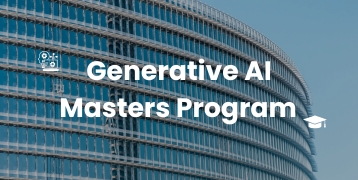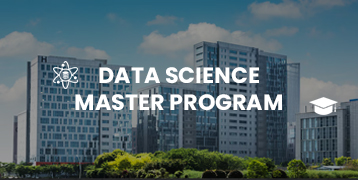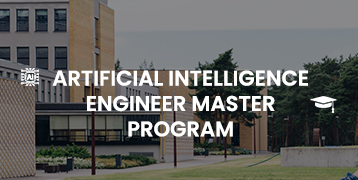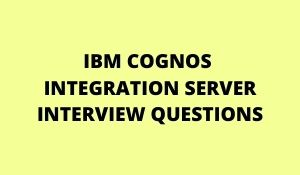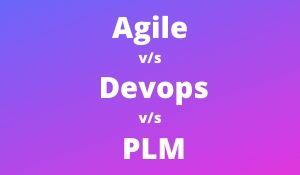
Agile:
A methodology that involves the continuous iteration of testing and development in the SDLC process is known as Agile. The method of software development highlights incremental, iterative, and evolutionary development. The Agile process breaks many products into tiny pieces, and it integrates for final testing. It is implemented in so many ways, including XP, scrum, kandan, and so on.
DevOps:
A software development method that is focused mainly on integration, communication, and collaboration in information and technology professionals to make products’ deployment. It’s a culture that promotes a lot of collaboration between the operation and development teams. It also deployed code for fast production in an automated way. It plays a vital role in increasing the speed of the organization to deliver services and is defined as a developed alignment of IT operations.
Agile PLM:
A life cycle management solution that helps in managing value chains is known as Agile PLM. It helps the teams cross-functionality on the co-related assignments via product data insights and integrated framework. There’s a custom design for Agile PLM, in every industry like pharmaceuticals, semiconductor manufacturing, and other consumer goods.

Agile vs DevOps vs Agile PLM:
| Parameter | Agile | DevOps | Agile PLM |
|---|---|---|---|
| What does it mean? | It is an iterative approach focused on customer feedback, collaboration, rapid, and small releases. | It is considered as a practice of operation and development teams. | Oracle acquired the Agile PLM tool. |
| Task | It focuses on constant changes. | It focuses on constant delivery and testing. | It focuses on new product development. |
| Purpose | Manage complex projects. | Manage end to end processes of engineering. | Scheduling computer aided production planning. |
| Team skill set | Agile emphasizes a wide range of equal and similar skills. | It spreads and divides the skill set between operation and development teams. | It emphasizes manufacturing of process management. |
| Implementation | It is implemented in a tactical framework range like safe, sprint, and scrum. | DevOps objective is to have more focus on collaboration. | It is implemented in computer aided production planning. |
| Duration | Within the units of “sprints” the Agile development is managed. | It strives for benchmarks and deadlines with the major releases. | Agile PLM follows a linear model. |
| Team size | The core factor of Agile is its team size. It has a small team. | It is a larger team size than Agile. | It has less team size and all are studying Oracle Agile PLM. |
| Target areas | The target area of Agile is software development. | Fast delivery and end-to-end business solution | The target area of Agile PLM is to make use of service response |
| Feedback | Agile depends on the customer’s feedback. | DevOps depend on the internal team’s feedback. | Agile PLM depends on the company which is licensed. |
| Emphasis | It emphasizes the development methodologies of software and it will not take care of the future. | It is all about deploying the software. | It emphasizes on rapid innovation, process competence, cross-functional association, cost-effectiveness, and risk mitigation. |
| Communication | For the implementation of Agile the scrum method is commonly used | It involves design and spec documents. It’s important to understand hardware implementations and software releases for the deployment process. | It involves responding to information. |
| Cross – functional | The team member should be able to get progress on the project. | In the case of DevOps, the operational teams and development teams are separate. That’s why it is quite complex | It enables us to work collectively on correlated assignments. |
| Automation | It doesn’t emphasize the automation. | The objective of DevOps is to maximize efficiency. | It provides better automation in workflow management. |
| Documentation | It gives priority to the working system documentation. It’s an idle way to make you responsive and flexible. Sometimes, it hurts whenever we try things for other deployments. | Process documentation is very helpful for DevOps for sending the software for deployment to the operational team. It’s very tough in transferring the knowledge. | Agile PLM documentation creates a new item by adding a new attachment. |
| Goal | Agile addresses all the gaps between development teams and customer needs. | DevOps addresses gaps between testing and development teams. | Agile PLM’s goal is to collect the knowledge to coordinate many products. |
| Focus | Agile focuses on both the non-functional and functional readiness. | DevOps focuses on business and operational readiness. | Agile PLM focuses on rapid innovation, process efficiency, risk migration, and closed-loop control |
| Speed and risk | Teams use robust application structure and Agile rapid support change. | In DevOps, the teams should make sure that the changes made to the architecture and also should never develop the risk. | Agile PLM may create some risks like hardware sizing on windows server. |
| Importance | It’s inherent to Agile in developing software. | Implementation and testing have equal importance. | It protects the lifecycle of the product. |
| Tools used | Bugzilla, JIRA, and Kanboard. | Chef, Amazon Web Services (AWS), Team city, and Puppet. | Core PLM, Manufacturing Process Management (MPM), Portfolio Management tool, and Service Data Management (Discrete) |
| Quality | It produces suitable applications with desired requirements. Besides, it’s easy to adapt to the changes happening on time. | With the automation, bug removal creates better quality. The developers have to follow architectural practices and best coding practices in maintaining quality standards. | Agile PLM streamline the product quality process. |
| Advantage | It offers an improved detection and shorter development cycle. | It supports the cycle of Agile release. | Agile PLM covers the lifecycle processes. |
| Challenges | Agile needs more teams for better productivity to match. | DevOps needs to be testing, development, and production to work in streamline. | Agile PLM enables more transformative product quality |

Main Differences:
- DevOps is considered a good practice in bringing operation and development teams together. Still, in the case of Agile, the iterative approach focuses on customer feedback, collaboration, and minor releases.
- The team size of Agile is small, but DevOps requires a large team.
- The main focus of DevOps is on both delivery and constant testing; Agile is on constant testing.
- In DevOps, both right and left principles are used, whereas Agile only uses the shift-left principle.
- The target of DevOps is to provide more end to end business solutions, and for Agile, the aim is software development.
- The agile DevOps focuses on business readiness and Agile on both readiness of non-functions and functions.
Values of DevOps and Agile:
It’s a statement of mind and culture, a way in which infrastructure and software development are built and deployed. There are no walls between operations and development. In the DevOps development and operations work simultaneously. It is based on two practice areas: Agile and Lean. Within a company, DevOps is not a role or title. It’s a commitment to deliver continuous deployment, delivery, and integration. According to the authors of the Phoenix Project & Unicorn Project, there are three ways to define DevOps.
- Flow Principles
- Feedback Principles
- Continuous Learning Principles
-
Learn more information from GoLogica "Agile PLM Training"
There are 12 principles for Agile:
- Welcome to changing requirements.
- The top priority is to satisfy the customers.
- Business and development should work together.
- Deliver working software frequently.
- Build more projects.
- An effective face to face communication.
- It promotes sustainable development.
- A measure of success is through working software.
- Agile maintains continuous attention in good design and technical excellence.
- The best requirements and designs come from self-organizing teams.
- Simplicity is essential.
- Tune and adjust the behavior of regulatory work.
Benefits of DevOps:
Companies that are using DevOps incorporate simple and plain. Using a simple team with cross-functional members in collaboration. It can deliver with maximum functionality, maximum speed, and innovation.
Technical benefits of DevOps include:
- Less complexity to manage
- Continuous software delivery
- Faster resolution of problems
Cultural benefits of DevOps include:
- Higher employee engagement
- More productive teams
- Good professional opportunities
- Stable operating environments
- Faster delivery of features
- Have a good time to innovate
- Improved collaboration and communication
Benefits of Agile:
The following are the benefits of Agile:
- Manage change more effectively
- Focus on the Highest Priorities First
- Improved Customer Engagement
- Product Owner Feedback
- Increased Productivity
- Visibility
- Highly Collaborative Environment
- Key Features First
- Accuracy
- Improved Transparency
- Agree on Clear Definitions

Benefits of Agile PLM:
The benefits of Agile PLM include:
- Engineering Collaboration
- Pedigree and Serialization
- Product Lifecycle Analytics
- Customer Needs Management
- AutoVue Enterprise Visualization
- Materials and Equipment Management
- Product Collaboration
- Regulatory compliance
- Cost and Quality management
- Global product network optimization
- Portfolio management
- Product record management
- It can be used in Mobile Apps
- Variant Management
One of the main benefits of Agile PLM is covering the process of the product life cycle. It gives clear visibility for the decision-makers on performing their duties through the mobile for flexibility. The functionality of Agile PLM is based on the lifecycle management of the product. With the step-by-step procedure, businesses can meet their objectives in daily operations.
Conclusion:
In rare cases, DevOps, Agile, and Agile PLM are used simultaneously. These three concepts can pursue the improvement of iterative IT work. They can also aid teams in getting good quality, working faster, and improving customer satisfaction. I hope you understood the differences between Agile, DevOps, and Agile PLM from this article. Happy Learning!
Related Articles:
Agile Interview Questions and Answers

